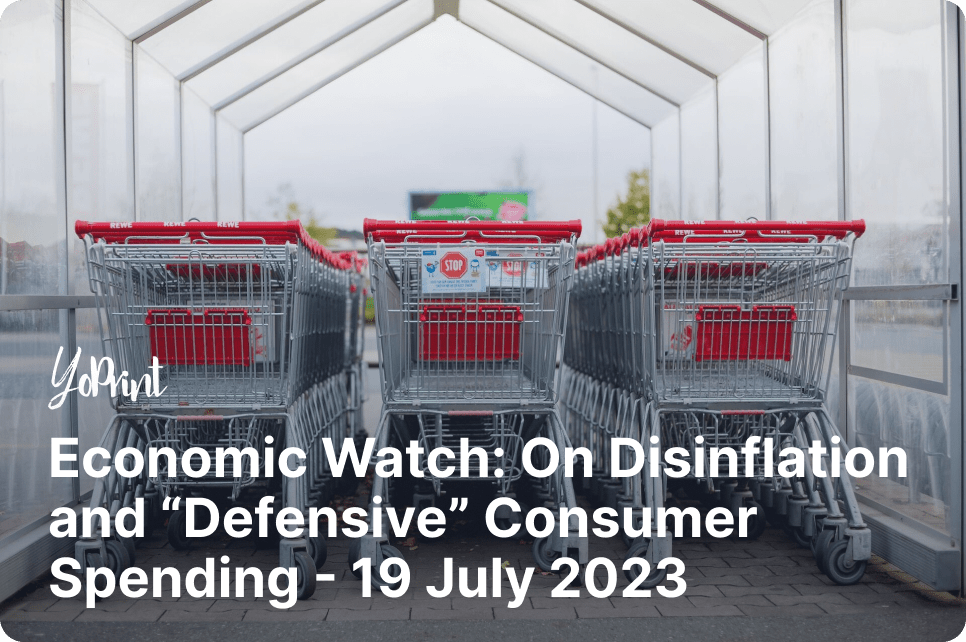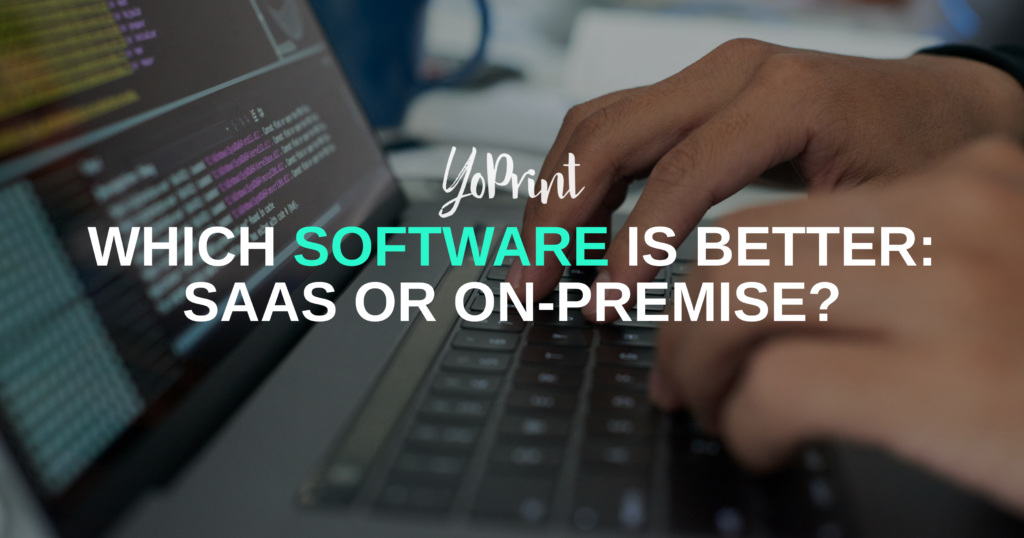- Consumer spending is unchanged for the most part; frugal “defensive” spending is still ongoing
- Disinflation is working but still at a slow pace; the job market is also staying robust
- The recession is still delayed, but the Fed is likely to approve another interest rate hike this month, which might help speed up the disinflation process
The current economic climate in July looks a little better than in the first half of 2023, but it would be easy to mistake this as a sign of imminent good times. Consumer spending power remains in a good place, but discerning consumers spend more on what they need than what they want. Even as disinflation slowly props up the economy, we think that consumers aren’t going to be splurging as much as they did during the pandemic years.
Consumer Spending on the Defensive
Foot traffic increased in June, primarily driven by department stores and the fitness segment. The former is seeing a slight improvement in its overall foot traffic but is still trailing behind discount stores’ solid foot traffic performance. In fact, department stores have accelerated in terms of foot traffic and online spending, even though June’s online spending went down 20 basis points year-over-year.
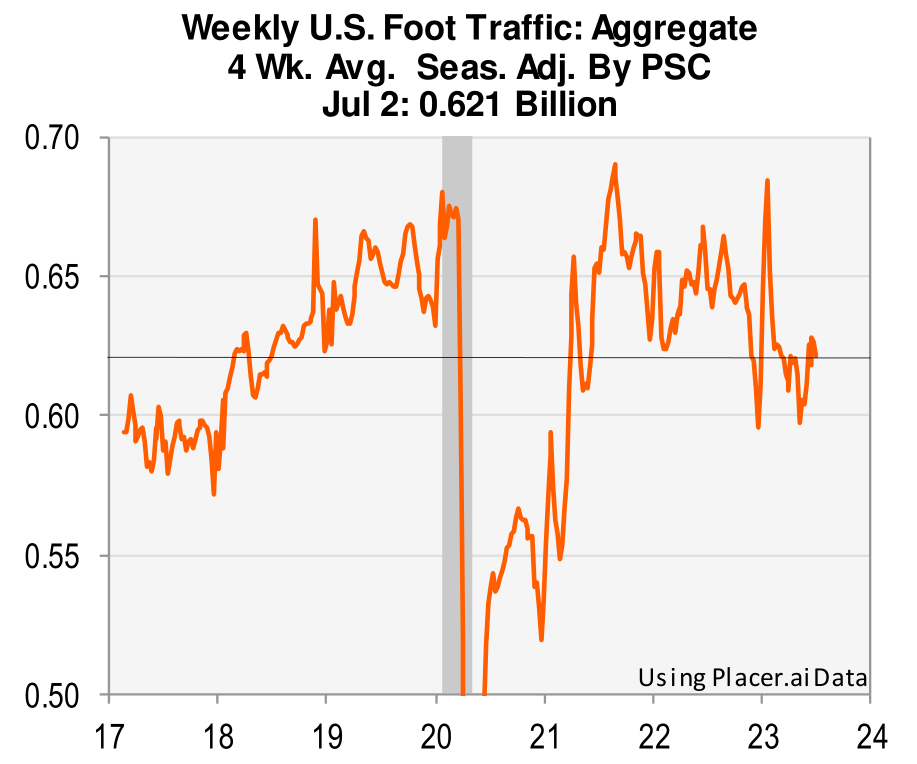
Speaking of online purchases, the Bank of America’s aggregated credit and debit card data shows that online spending was “down 20bps year-over-year,” with little changes compared to the flat year-over-year position back in May. Though June’s online spending was below trend, it’s thankfully not an indicator of “recessionary economic growth and consumer spending.” It could be influenced by people looking to visit physical stores and a shift to spending on groceries and away from consumer wants, among other reasons.
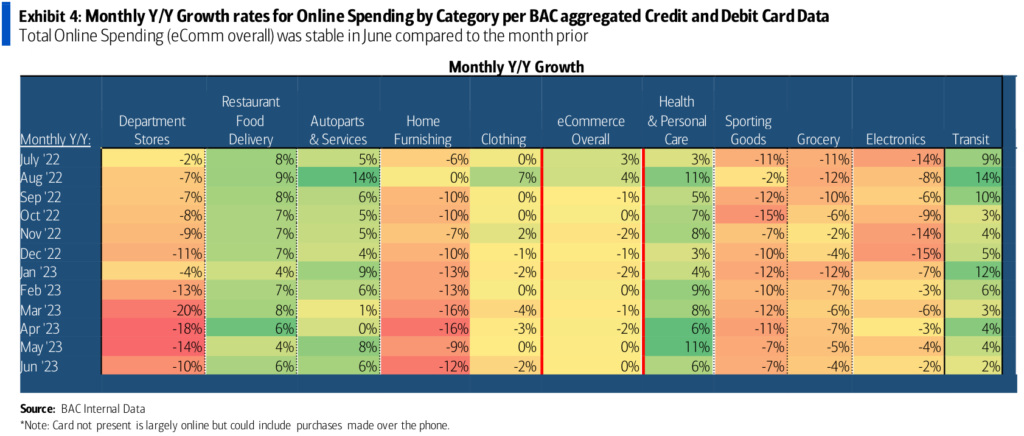
We’ve already talked about this shift in consumer spending for the previous months, but even as the economy does see gradual amelioration, don’t expect consumers to suddenly resume buying like they used to.
Weaker Apparel Spending in June
The clothing segment had one of the lowest month-over-month improvements in retail sales for June, despite “increased card spending across all income cohorts in June,” as the Bank of America reported.
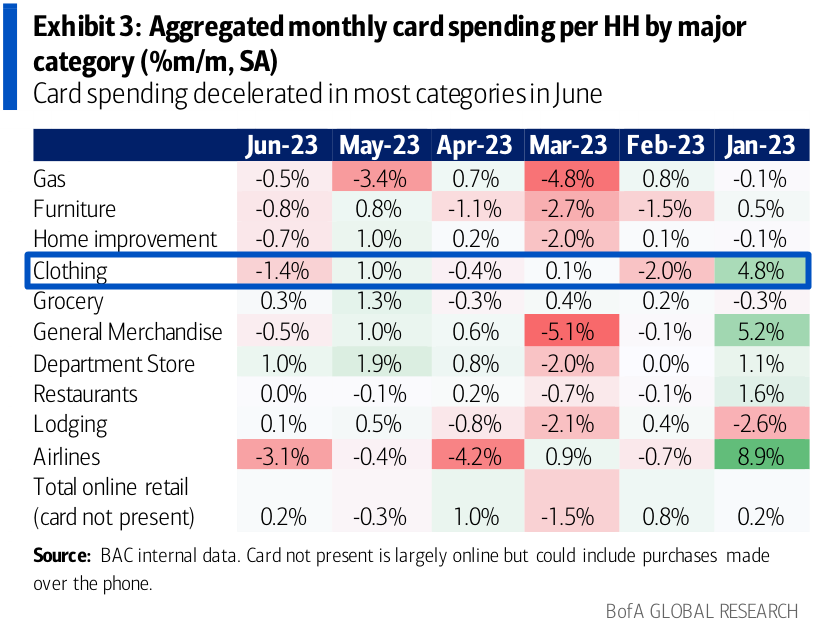
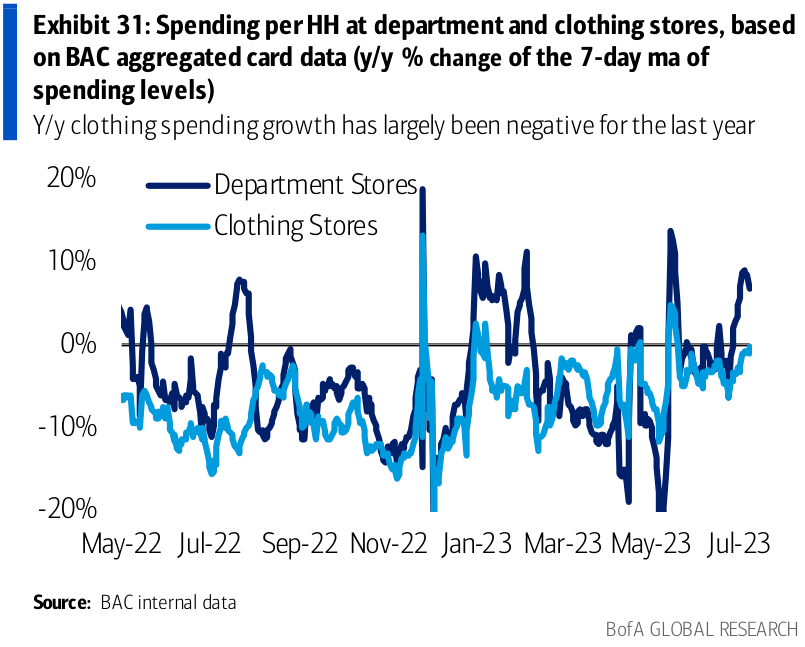
Some other good news is that online spending on clothing recorded a modest 5 percent quarter-over-quarter growth in Q2 of 2023. It’s not much, but it’s still better than a full-on decline.
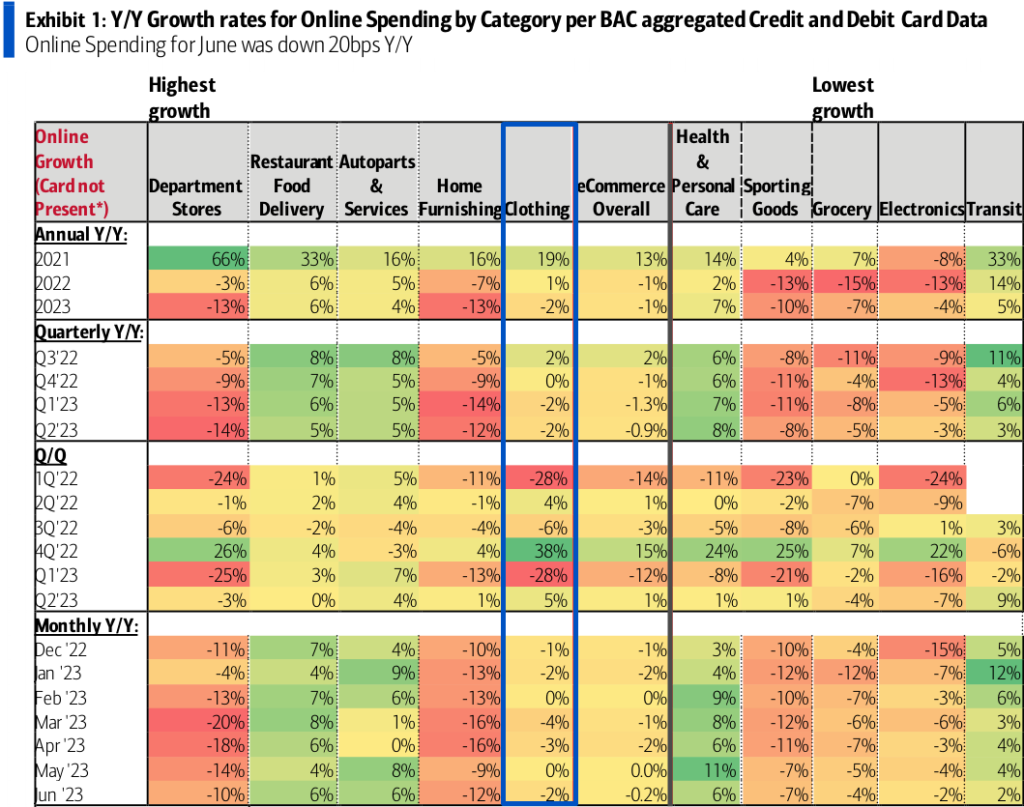
As you’ll note in the chart above, clothing spending growth hasn’t been doing very well. Fortunately, the 4th of July week did help bring in some marginal growth (for the week ending July 8th), particularly for higher-income households. Lower-income households didn’t reflect a similar upward trend as they prioritized groceries and good deals at discount stores.
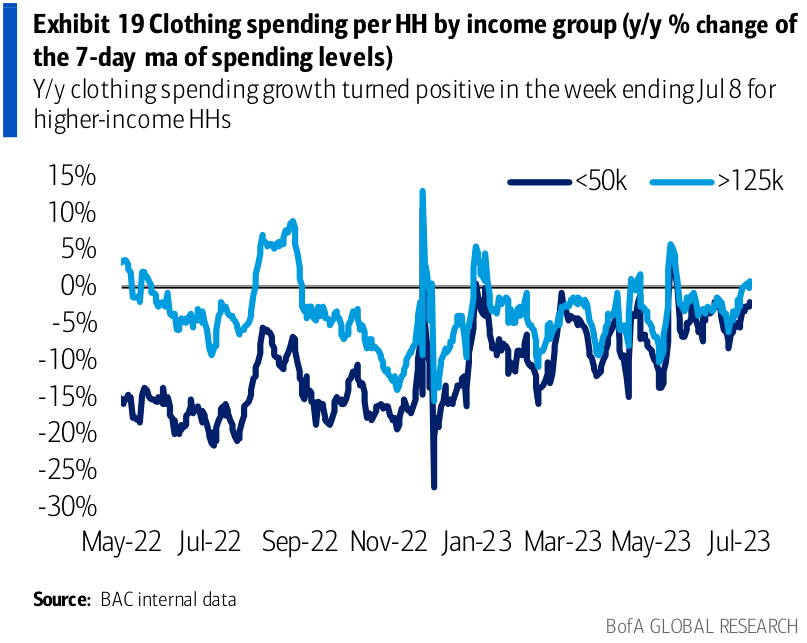
Speaking of which, Levi’s recorded lower nominal revenues for the year’s second quarter. The company is acutely aware that “lower [and] moderate-income consumer[s]” are “being squeezed” – in line with the expectations of what other apparel companies have predicted going forward from the first half of 2023. With the company’s revenue dipping compared to last year, it affirms the Bank of America’s views that there’s a broad slowdown in consumer spending on apparel.
“…I suspect we’re all reading the same newspapers, feeling the trade-offs of needing to pay for a summer vacation versus a new pair of jeans. And I think that’s some of it. But we’re competing now for other dollars that are being spent out of the consumer’s wallet, and that moderate-income consumer is having to make some tough choices now.”
Chip Bergh, Levi’s CEO
Can We Expect More Good News?
The overall picture continues to paint consumers are being more frugal with their spending, given the lower priority of apparel spending in favor of more important segments like groceries. However, we believe the current climate may slowly skew towards a more positive outlook.
For one, the Bank of America reported increased card spending across all income cohorts in June, as evidenced by the table below.
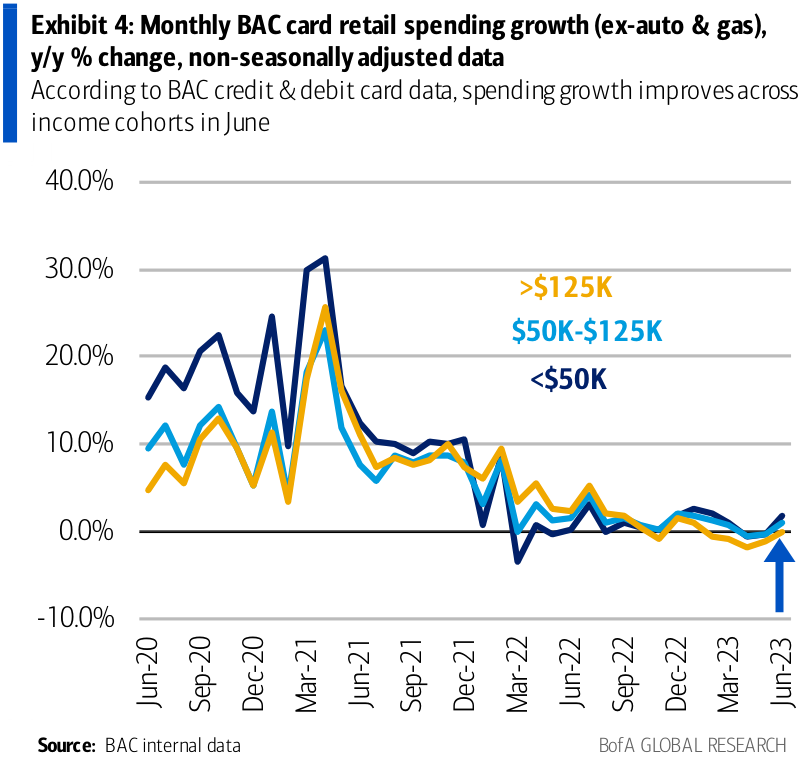
Additionally, the housing market is starting to see steady, marginal improvements as a whole. As we previously reported, the NAHB index, housing starts, and housing permits have all seen a positive uptick. Given that the HOPE framework is mainly driven by the housing market (with the other areas trailing behind in the wake of the housing market’s effects), we’re optimistic that the situation will improve.
Disinflation is also starting to gain some steam, largely due to the changes in energy prices, and that means consumers can stretch their money a lot more than they previously could when inflation was still strong. The surprising upsurge in the University of Michigan’s Survey of Consumers – at 13 percent “above June” – is also largely attributable to the ongoing disinflation and the “stability in labor markets.”
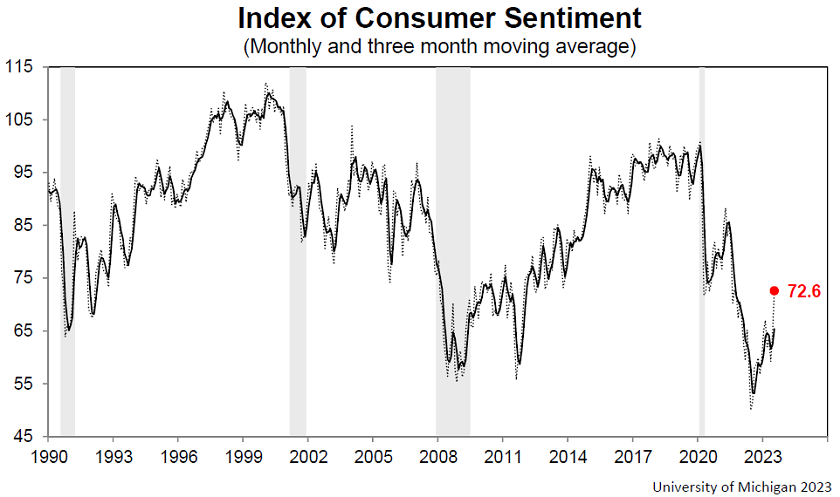
Meanwhile, Americans’ total credit card balance remains at $986 billion in the first quarter of 2023, unchanged from the last quarter of 2022. Including July’s figures, however, credit card debt currently stands at $993 billion as of July 5th. Household credit card debts are still a major concern affecting overall consumer affordability, especially for “consumers with lower credit scores” who are feeling the heat.
Good News with Disinflation
On the subject of disinflation, both the consumer price index (CPI) and producer price index (PPI) have cooled to their lowest level in two years (since March 2021, to be precise). This is down from 4 percent in May 2023 and just a hair’s breadth from expectations of 3.1 percent. Prices went up 0.2 percent “on a monthly basis” in contrast to May’s 0.4 percent.
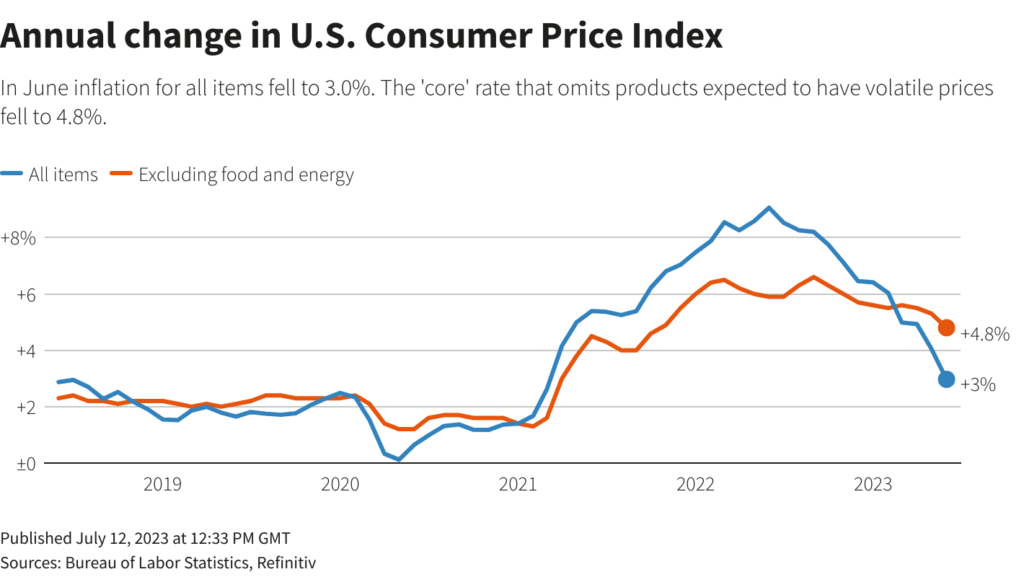
Much of this can be attributed to the change in gas prices, which were up 1 percent from May but are “down nearly 27 percent from a year ago.” Food and grocery store prices also increased modestly at 5.7 percent and 4.7 percent, respectively, for a 12-month period ending in June 2023.
Meanwhile, the PPI recorded the smallest gain in three years at a tiny 0.1 percent in the 12 months through June, in contrast to the 0.9 percent gain recorded in May. This further points to the fact that the Federal Reserve’s efforts are bearing fruit.
Of Jobs and Wages
Wage gains may have slowed, but they remain quite elevated due to the low unemployment rate (3.6 percent in June) and relatively high job openings. Last month, US nonfarm payrolls went up 209,000; while it is the lowest since December 2020, employment remains relatively healthy based on historical data. Meanwhile, private companies added 149,000 new jobs, but below expectations of 200,000 new jobs.
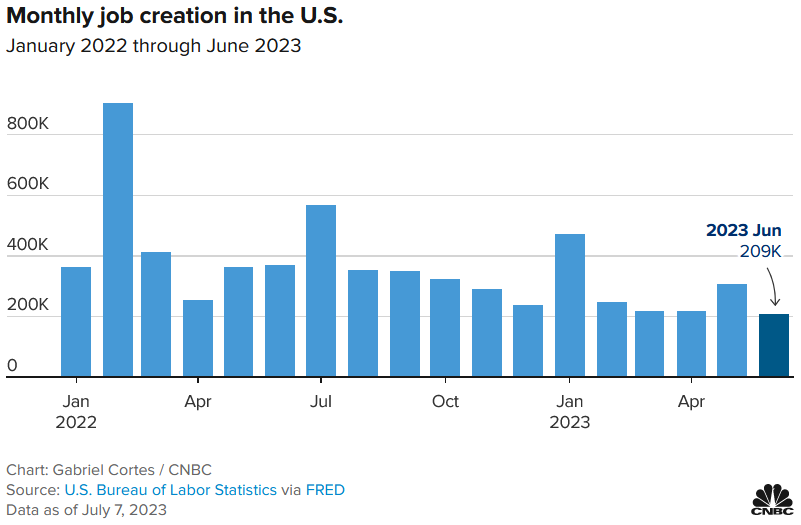
The labor market is strong, especially with the participation rate remaining at 62.6 percent for four consecutive months. Companies are still keen on retaining hires for fears of “future hiring difficulties” that may arise later in the year (assuming it does happen). Though job openings declined to 9.8 million as of “the last business day of May,” according to the U.S. Bureau of Labor Statistics, there were still 1.6 vacancies available for every unemployed person.
Weekly jobless claims fell by 12,000 to 237,000 (seasonally adjusted) in the week ending July 8th, well above expectations of 250,000. This accounts for the Independence Day holiday, so we expect future changes to these figures. On the other hand, continuing claims increased by 11,000 to reach 1.729 million in the week ending July 1st. The number of claims is still low compared to previous levels, indicating that laid-off workers can quickly gain new employment.
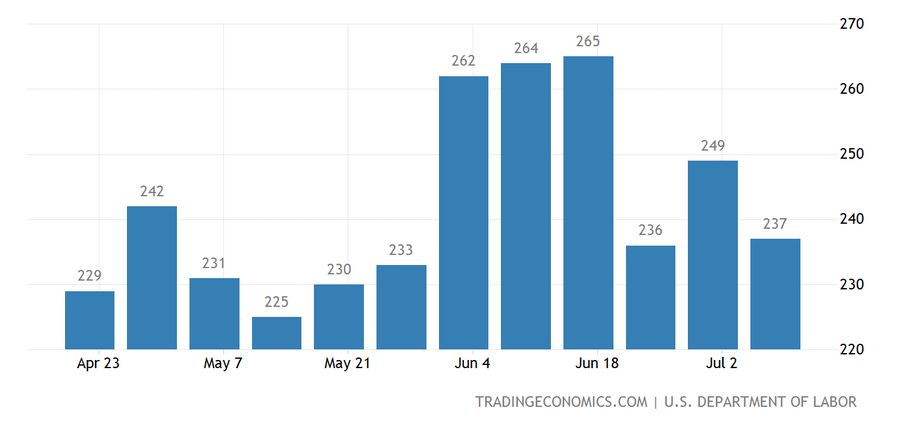
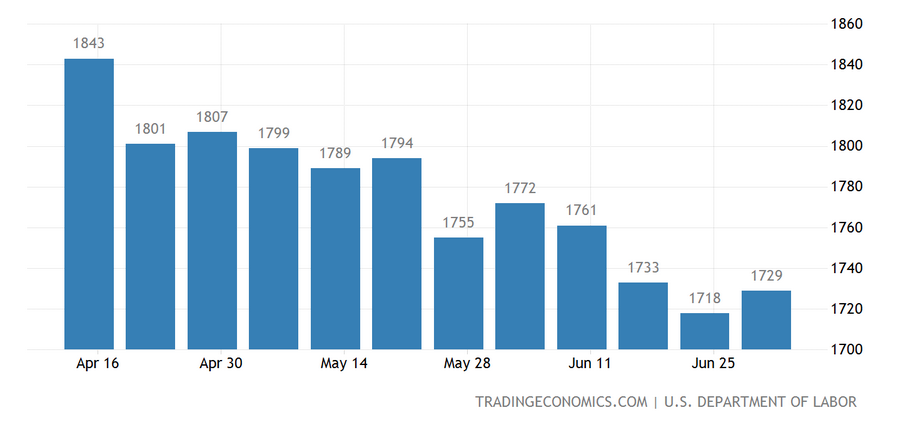
Wages are still at elevated levels and keep inflation sticky. In fact, wages have increased by 4.4 percent from a year ago, slightly higher than market expectations. Wages are still increasing, in fact, but it’s currently growing at a much slower pace than before the pandemic.
The wage growth is primarily motivated by slowing nonfarm payrolls, near record-low unemployment (currently 3.6 percent in June), and high quit rates (2.6 percent in May compared to 2.4 percent in April). In a bid to retain their existing workforce, companies are maintaining high compensation levels as a major incentive to stay. Nevertheless, the high quit rate still indicates that employees are willing to find new jobs if and when they choose to while giving them significant leeway when bargaining for better pay.
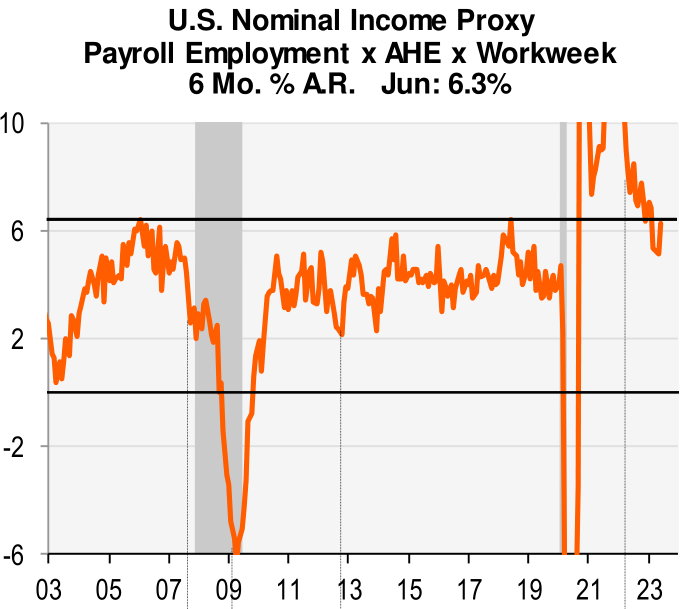
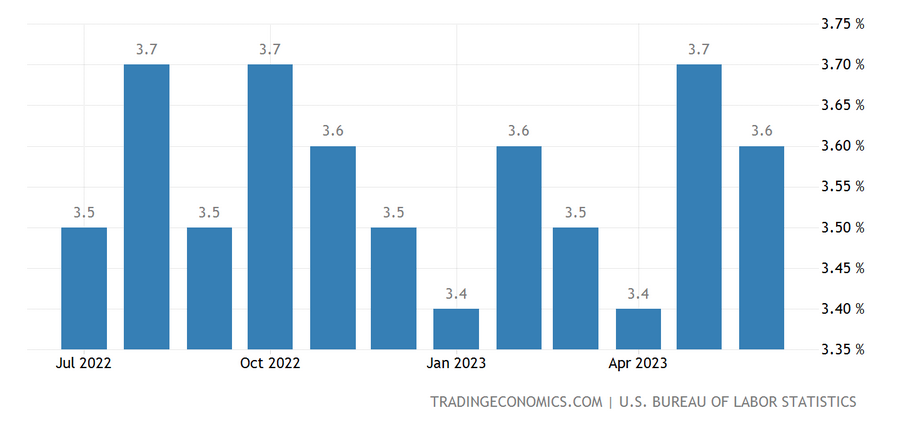
However, Piper Sandler believes that “real spending is on track to increase at just a [1 percent quarter-over-quarter annual rate]” for the second quarter of 2023, which could mean a return to “normal” levels for salaries. Even after the high-wage bubble bursts, consumers will still be prudent with where they spend their money, so this “defensive” spending trend we mentioned earlier will no doubt continue through 2024.
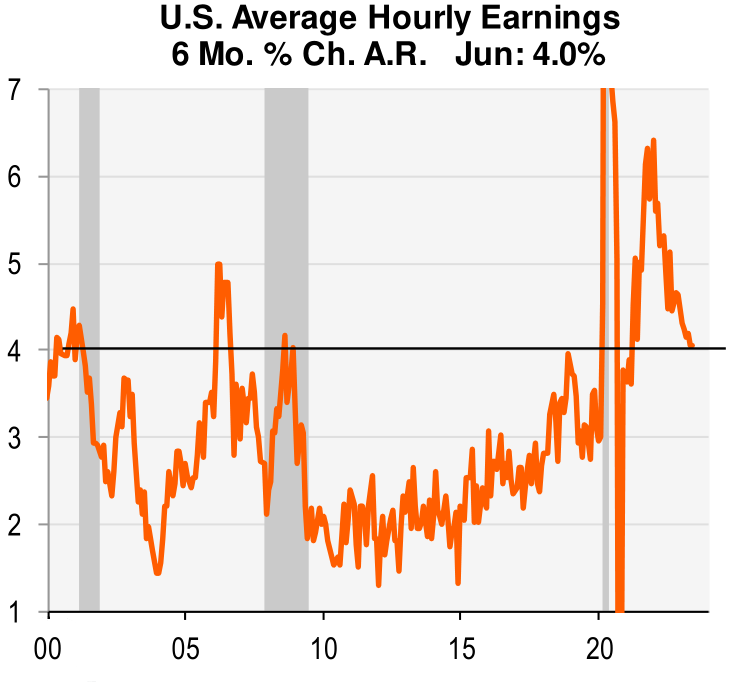
What’s In Store For You?
The big question that’s on many people’s minds is whether a soft landing is at all possible. Lael Brainard, director of the National Economic Council, believes the “economy is defying predictions that inflation would not fall absent significant job destruction.” Given the labor market’s resilience and the myriad positive economic trends we’ve seen, some experts think a soft landing might be in sight in time. Others are not so sure.
What remains certain is that the Federal Reserve will need to deliberate on another rate hike in late July or if current conditions are optimistic enough to warrant another pause. The likelihood of further hikes is currently strong (a “roughly 50 percent chance” by November, according to Reuters) as the Fed hasn’t achieved its target. Some think the hike will be green-lit “for credibility’s sake” to combat inflation further. On the opposite side, there’s the belief that another hike isn’t “absolutely guaranteed” since the indicators have been green so far.
“Fortunately, we still see forward momentum in many sectors. However, I think it’s really too early to declare that as a done deal, because as the Fed itself has said, much of the work that they’ve done has not yet shown up in [the] market.”
Roger Ferguson, former Federal Reserve vice chairman
The recession remains delayed, with some quarters thinking it’ll start in the middle of 2024. Others maintain it begins once we enter the new year. We’ll continue to keep an eye on things as they change, so stay tuned to our next installment in August.
In the meantime, we maintain our advice to not acquire any new equipment, what with interest rates still high and lending standards still tight. Continue to strengthen your cash flow in the meantime and find ways to boost your revenue from your existing customer base. Additionally, if you’re looking to hire new employees, keep in mind that wages are still high at the moment. Hire only if you really need the manpower.
